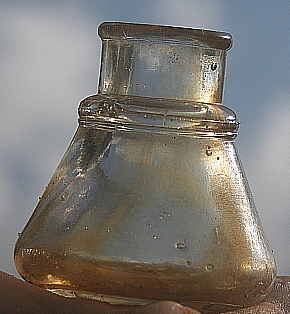Written by the Treasureguide for the exclusive use of treasurebeachesreport.blogspot.com.
Did you know there is a currently heated debate about renaming the barrier island south of Cape Canaveral? There is.
And did you know that some are recognizing 2013 as the 500th anniversary of the discovery of Florida by Europeans? An earlier map, however, shows that Europeans mapped Florida several years earlier than Ponce de Leon's exploration in 1513.
Here is a link that shows a map supposedly made by Portuguese slavers around 1500 as well as other early Florida maps.
http://scholar.library.miami.edu/floridamaps/view_image.php?image_name=dlp00020000140001001&group=spanish
 |
| 14K Beach Find |
Here is that story.
http://www.ibtimes.com/1913-nickel-worth-millions-rare-liberty-head-coin-heads-auction-1046996
A bunch of skulls were found were there was once a lake in Mexico near an ancient pyramid. It appears there was mass sacrifice there around 600 to 850 AD.
Here is the link for more of the story.
http://news.yahoo.com/mass-human-sacrifice-pile-ancient-skulls-found-152724186.html
Bill Gates proposes doing away with cash. Here's why.
http://finance.yahoo.com/news/bill-gates-hates-cash--here-s-why-185938362.html
Even though cash is already becoming a smaller part of our economy and I think probably will disappear someday, I don't buy all the arguments.
Dan B. says the blue glass rods that I found are swizzle sticks, and I'd say that is right, but swizzle sticks have more history than I would have guessed. Here is what Wikipedia says.
The original swizzle sticks were created in the 1700s at a rum plantation in the West Indies. They were used to stir up Bermudian cocktails called Rum Swizzles and were made from the branch of a plant. In the late 1800s and early 1900s stir sticks made of glass were created to shake out the bubbles from champagne, whose carbonation caused indigestion for some drinkers.
After Sandy and some other erosion we had towards the end of 2012, 2013 sure has started off slow. Beach detecting for old shipwreck items has been poor. With all of the gentle southeast winds it has been more like summer conditions on the Treasure Coast beaches, not winter. That is the way it goes.
We've been having a 1 - 2 foot surf a lot of the time with occasional bumps up to 3 or 4 feet. That just won't do much. On top of that the sand has been accumulating on and near the beach fronts for weeks. And according to the surf web sites, there is not reason to expect a change real soon.
That means you'll have to be patient and creative. It is a good time to scout around, explore and experiment.
I'm starting to feel like our winter is over. Very often we do get a storm in the Spring though. What do they say? Hope springs eternal.
Low tide this afternoon will be around 4 PM.
Happy hunting,
Treasureguide@comcast.net

































